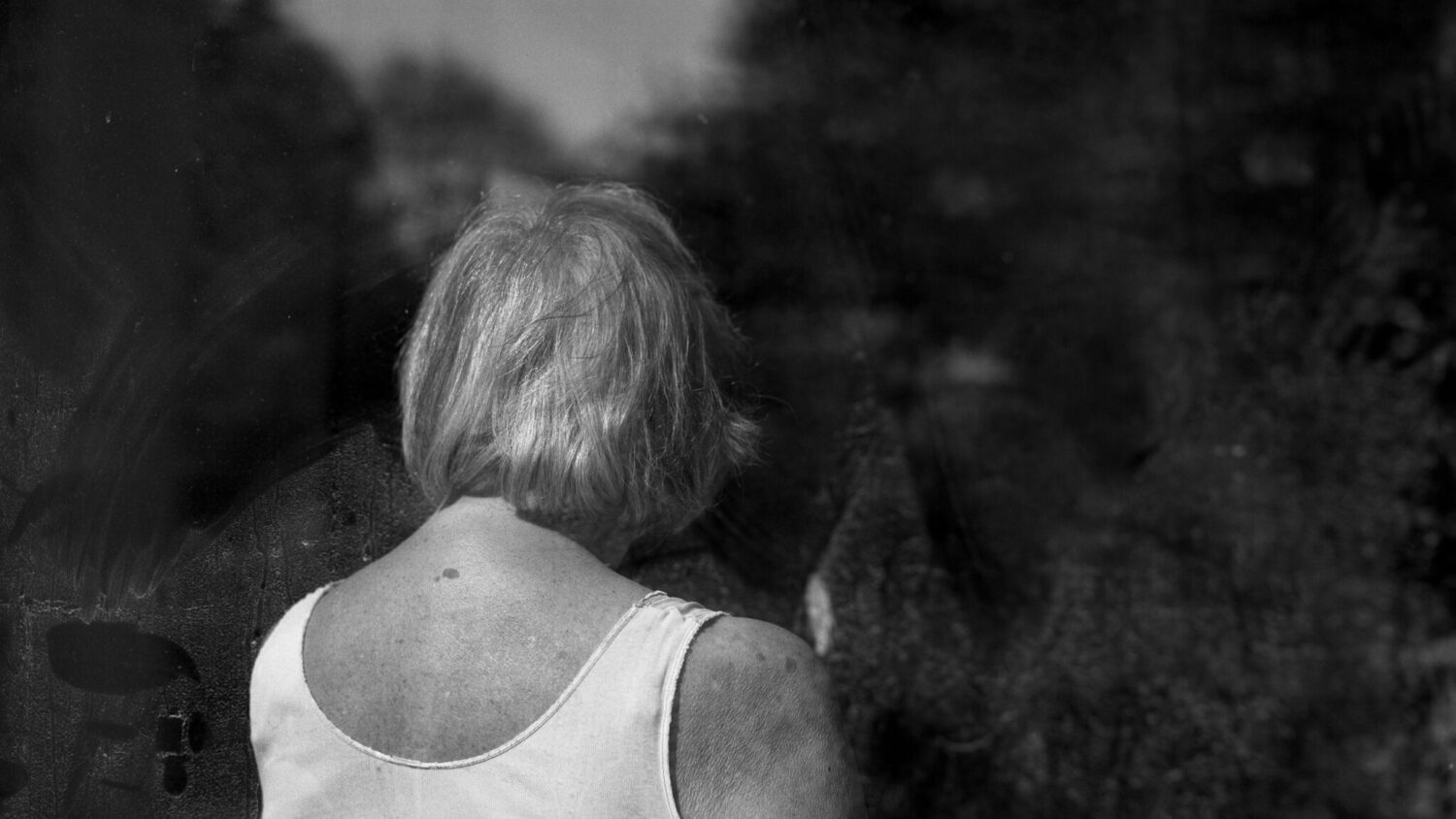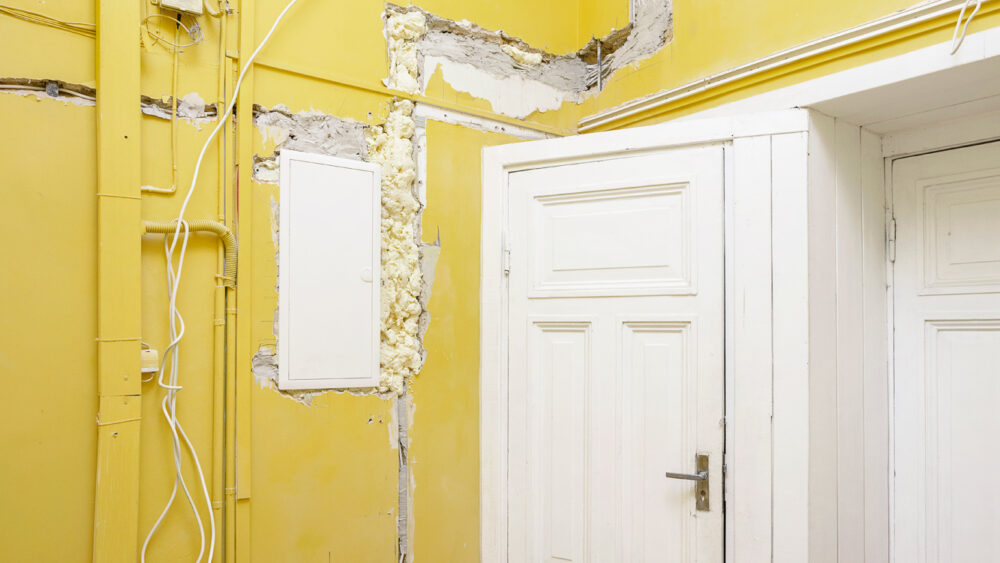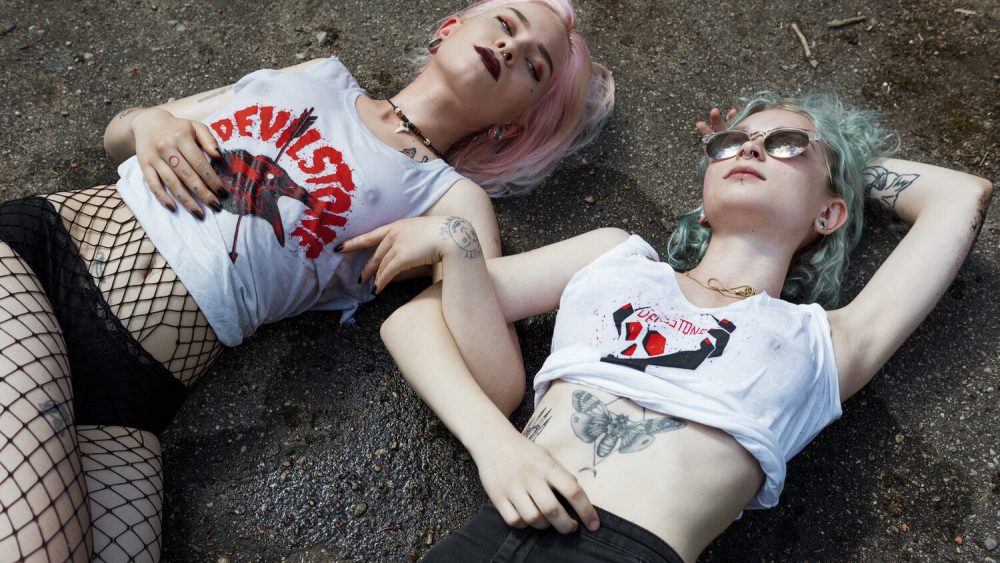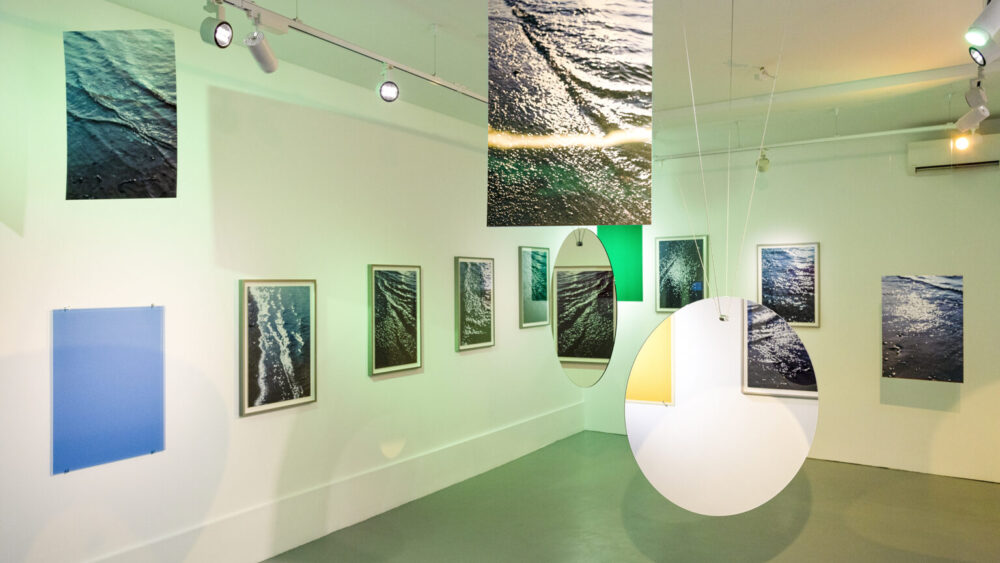Spring Photography News in the Baltics
ESTONIA
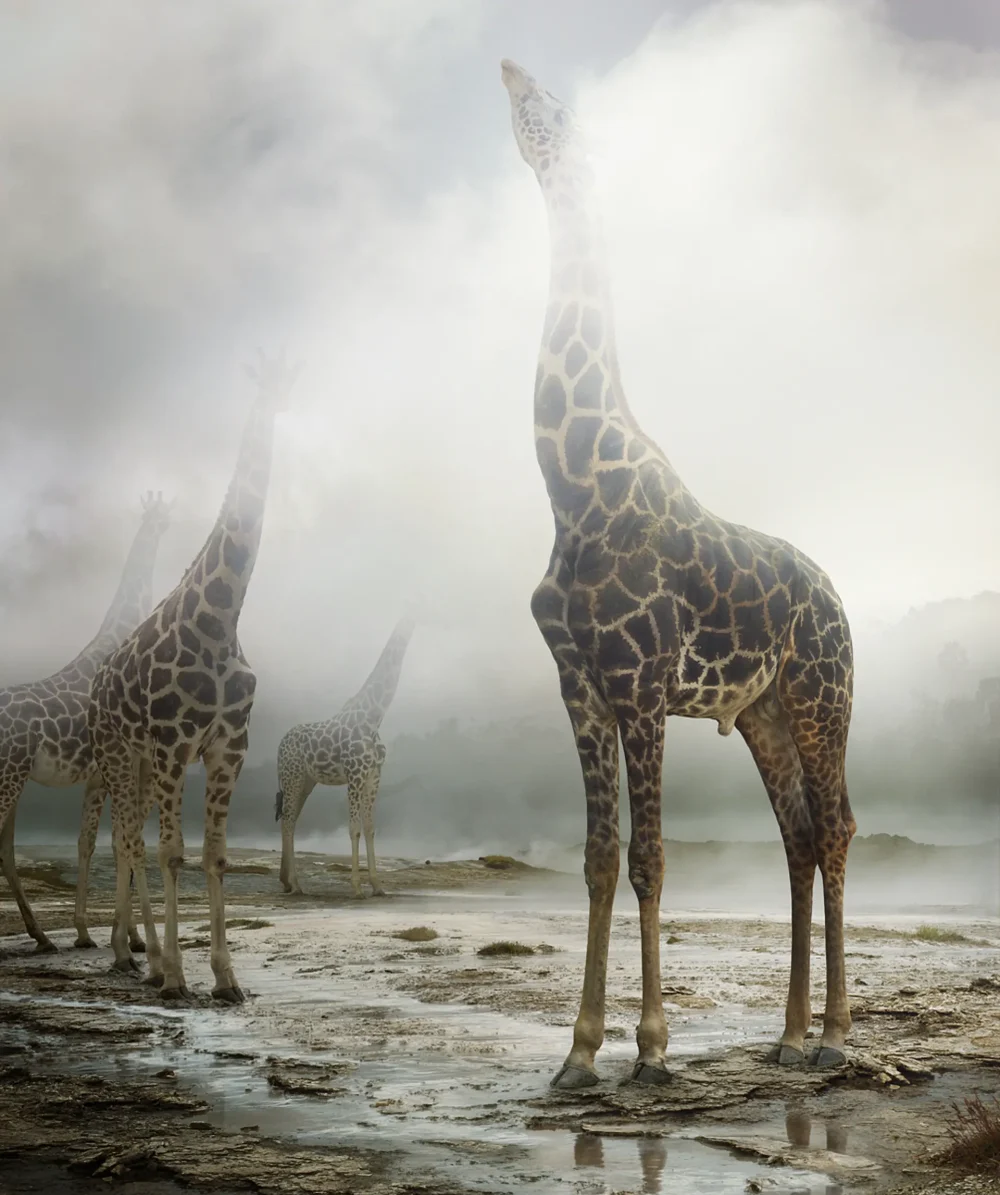
- Simen Johan, Until the Kingdom Comes
15.03.2024 – 19.05.2024, Fotografiska Tallinn
Simen Johan (1973) initially drew attention in the early 90s by merging digital manipulation with traditional darkroom techniques. He has since developed a hybrid form of image-making, integrating candidly photographed animals and landscapes with a compositional structuring and conceptual intent typically associated with painting and cinema. Johan born in Kirkenes, Norway, was raised in Sweden and has been established in New York for over two decades.
Combining image elements that he photographed in a variety of international locations, Johan’s images reveal poetic and often unexpected relationships that speak to the illusory and multifaceted nature of existence. Stripes on a dazzle of Grévy’s zebras mesh with the fronds of geographically incongruent palms; jaguars in a tree are both defined and obscured by their spots and dappled sunlight; pigeons flock towards light like moths (or angels). Tensions between what is revealed and what is concealed, what is alluring and what is menacing, what is fact and what is fiction, both shape and unsettle the scenes. These amalgamations of sentiments, creatures, and environments are printed near life-size to mimic the scale of natural vision.

- Elizaveta Porodina, Un/Masked
30.11.2023 – 13.04.2024, Fotografiska Tallinn
In Elizaveta Porodina’s exhibition Un/Masked, we are invited to gaze into the spheres of her artistry and image creation. With her experimental, dreamlike and occasionally surreal photography, she calls us to merge the past and the contemporary – a journey through time and space.
Un/Masked reflects the past few years of Elizaveta’s life and work. Her imagery is surreal, dreamy and intimate, on occasion frightening, haunting and delicate. Tears and water are recurring themes in her images and she draws inspiration from her childhood in Russia, art, history, film and religion. Combining the intimate and the uncanny, Elizaveta pursues her subject matter with startling precision, achieving an intensity and freshness.
Born in Moscow in 1987, Elizaveta Porodina grew up in post-Soviet Russia but has been based in Munich, Germany since the age of 12. Coming from a theoretical background in clinical psychology, Porodina speaks with a distinctive photographic language—mastering color, movement, and emotion.
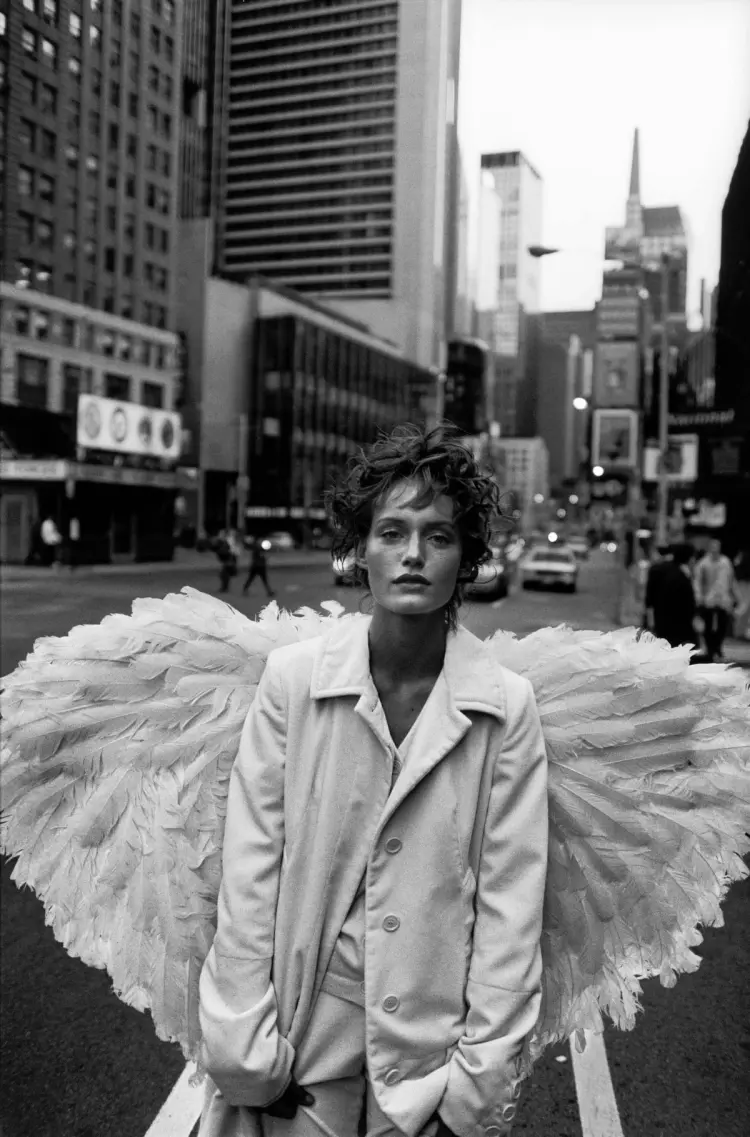
- Peter Lindbergh, Lightness of Being
03.02.24 – 02.06.2024, Fotografiska Tallinn
The exhibition The Lightness of Being by Peter Lindbergh (1944–2019) consists of photos taken throughout the artist’s extensive career. Lindbergh is recognised as one of the world’s most influential photographers, transforming the perception of fashion photography and the individuals captured through his lens.
Lindbergh’s work in the 1990s marked the beginning of an era that continues to resonate today – a time of supermodels and a unique blend of femininity and masculinity, often depicted in white shirts.
Over the decades, he captured numerous cover photos for fashion and lifestyle magazines, and many credit Lindbergh’s photos as the starting point for the careers of supermodels such as Linda Evangelista, Naomi Campbell, Cindy Crawford, and Christy Turlington.
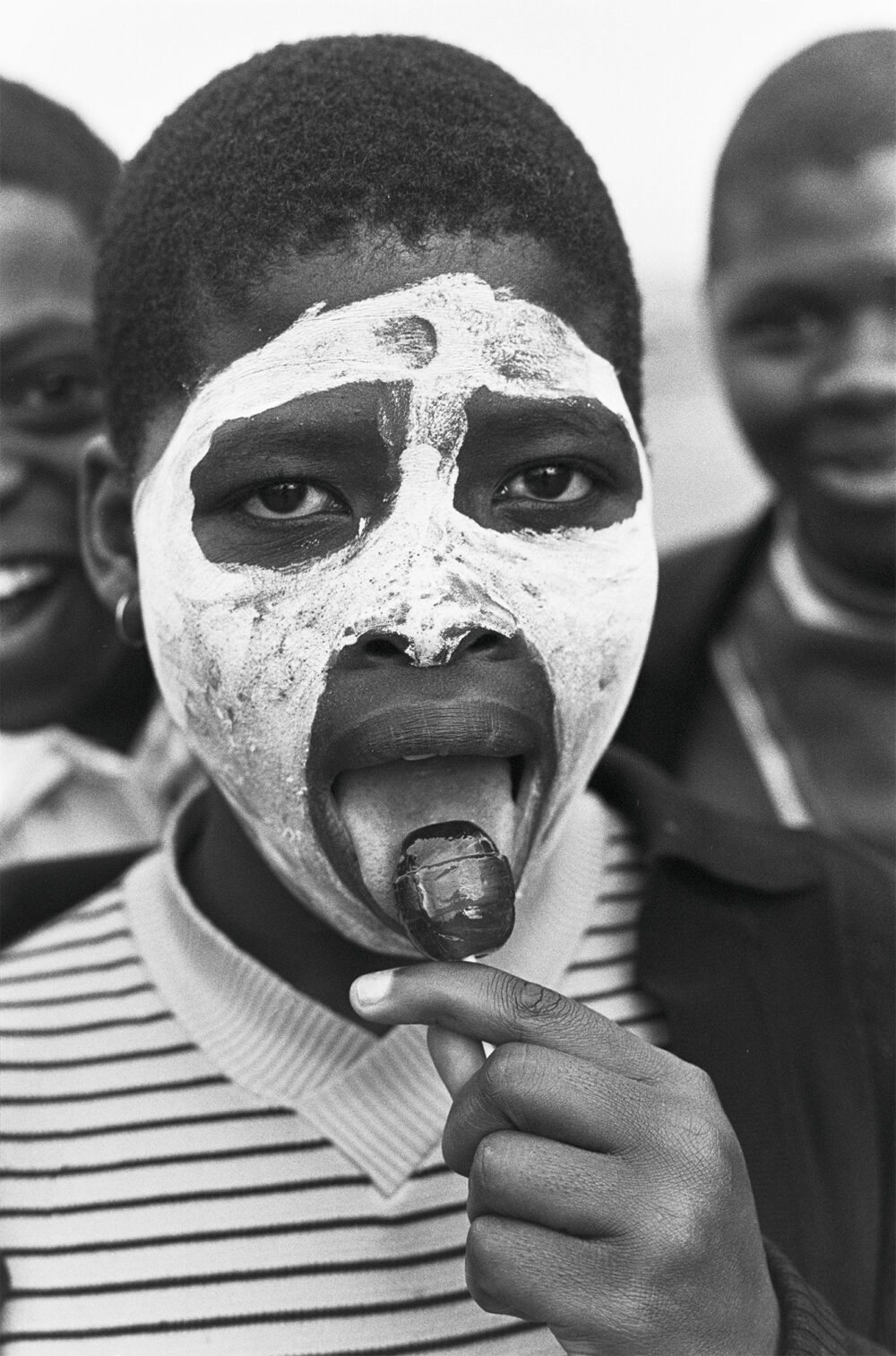
- Juhan Kuus, Portraits. Up close & personal
01.02.2024 — 04.05.2024, The Juhan Kuus Documentary Photo Centre
The exhibition celebrates the 70th anniversary of one of Estonia’s most renowned photographers. Although classical portrait photography was not Juhan’s primary focus, his skill, sensitive eye, and courage to get up close and personal tell universal stories of humanity, history and human dignity as reflected through close-ups and intimate camera contact.
The exhibition and the second expanded edition of the book Juhan Kuus, the Measure of Humanity contains, in addition to his best works, 37 new photographs, most of which have not been publicly presented before. Most were selected from an earlier period of Juhan Kuus’s work, from 1970 to 1986. The photographs have been chosen from Juhan’s collection of negatives, which is now in the care of the Juhan Kuus Foundation.
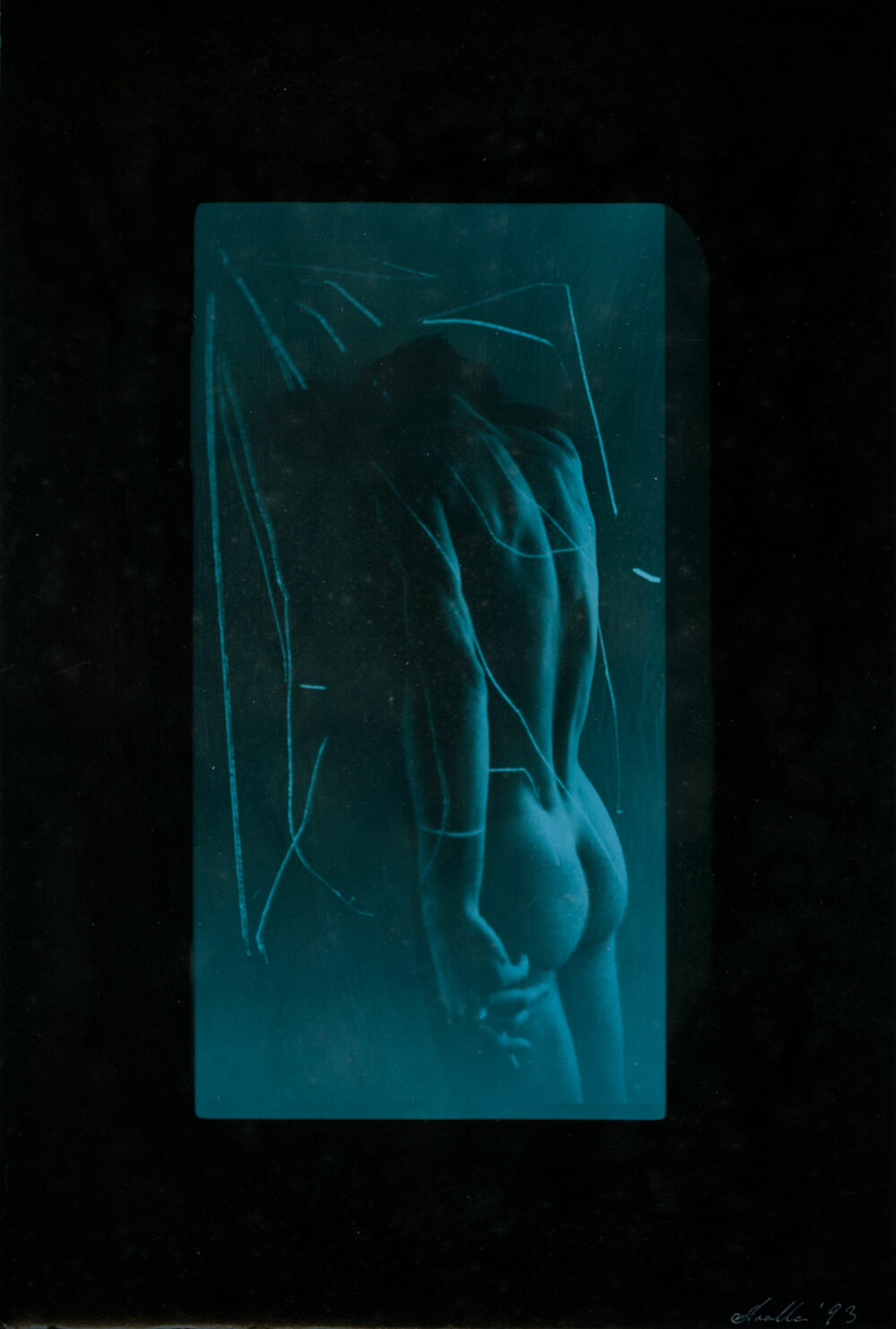
- Are Tralla, The Body Remembers
15.02.2024 – 16.03.2024, Tartu Pallas Gallery
The purpose of the exhibition The Body Remembers is to unravel the essence of a man and to help him find his changing place in today’s society by asking questions that while maintaining dignity would draw attention to men’s fear of marginalization and the accompanying false image.
The exhibition exhibits photographs that were made with a 30-year time shift where body, mind, politics, love and absurdity are contrasted through projection and production. The pictures explore the influence from the Soviet era, modern madness and spiritual oppression through the perspective of a man.
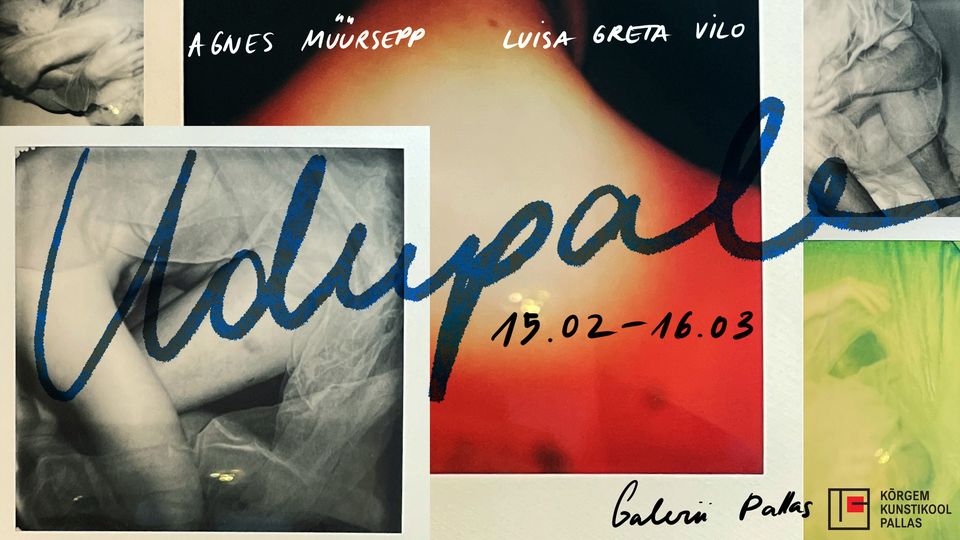
- Agnes Müürsepp & Luisa Greta Vilo, Misty Kind
15.02.2024 – 16.03.2024, Tartu Pallas Gallery
The exhibition is the result of the self-reflective and introspective creative process of two photographers. Its main aim is not so much to display finished pieces, but rather to highlight fragments of the working process that reflect different aspects of being an artist such as the search for freedom, testing boundaries, imposter syndrome, and grappling with perfectionism.
In assembling the exhibition, the artists took it upon themselves to reflect their thoughts and feelings in a notebook in a free form. Quite quickly, common points of contact emerged in both worries and dreams:
“We both have felt how photography can sometimes be a lonely and overly individual process. We wanted to experience whether and how it is possible to share a space behind the camera together. Both of our goals were to break free from the expectations imposed on us and at the same time find new outlets in our work. We found it extremely beneficial to write out all our fears and doubts in order to overcome these monsters of insecurity. On paper, they somehow become ludicrous and small. The antidote that emerged was prioritizing authenticity. If what you do comes from the heart, then all is well.”

- Pärnu FotoFest 2024, Take it personally
21.02.2024 – 31.03.2024, different locations
The festival was initiated by the Pärnu City Gallery and will be held for the seventh time this year. The festival is curated by Kaupo Kikkas. This year’s theme is Take It Personally.
“For this festival I chose the theme, which draws attention to the personal and often even intimate relationship that an artist has with their work. I believe that serious art is always personal, and it is impossible for an artist to distance himself completely from his work. We often hear the phrase “Don’t take it personally” after criticism or bad praise. This unnecessary bad-mouthing has also become part of the language of art, thanks to the proliferation of social media. We must not accept it. “Don’t take it personally” is neither an excuse nor a licence to justify offensive or aggressive language.
I invite each viewer to take it personally, to go in and decide what kind of art they like. A well-publicised exhibition in a big museum may not be better than small photographs on the wall of a small village hall by an as yet unknown artist,” says Kikkas.

- Hedi Jaansoo, Peeter Tooming and Endel Veliste, You, River
14.12.2023 – 26.05.2024, Kumu Art Museum
The exhibition brings together three different, yet equally sensitive artistic visions. Through the lens of a camera, the photographers Peeter Tooming (1939–1997) and Endel Veliste (1930–2001) and the visual artist Hedi Jaansoo (1989) recorded points of intersection between human beings and nature. Their photographic series exemplify how the camera may amplify the distance from the surrounding environment, lend voices to stones, plants and water, and make the intrinsic interlacing of natural and artificial environments visible. In the context of current environmental issues, this exhibition creates a poetic dialogue between photographic series by two Soviet-era photographers and a modern-day visual artist. It urges viewers to think about the relationship between nature and people and about the mediating role of technology in that relationship.
LITHUANIA

- Anton Lukoszevieze, Elephant In A Landscape
28.02.2024 – 30.03.2024, Prospekto Gallery, Vilnius
Anton Lukoszevieze is an interdisciplinary artist, musician, and composer living in Vilnius, with photography often at the heart of his practice. In recent years, his Lithuanian ancestry has often been a focus of his work, which embraces the liminal spaces and cross currents between different media and contexts. The exhibition features a large body of color chromogenic drawings, analogue photographs, objects, sounds, and other artifacts.
“Do memories have color or perspective? Maps have signs, shapes, lines, and 2-dimensional contours to illustrate the geographic identity of a place, a quasi-aerial view to recreate the reality of a location, which is not the same as the human perspective on the ground. My father described to me how my grandfather remembered sledding down a small hill next to a lake by the manor in the wintertime. This is the only memory trace I have of my family in Lithuania. It is fixed in my mind: snow, sky, water, land,” says Anton Lukoszevieze.”
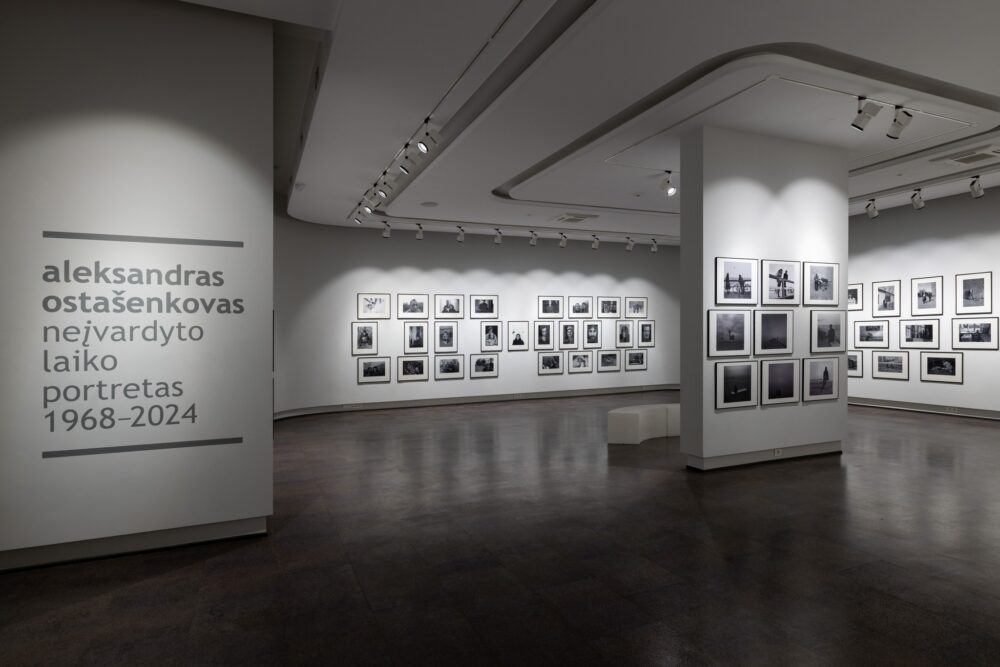
- Aleksandras Ostašenkovas, Portrait Of An Unnamed Time. 1968-2024
01.02.2024 – 31.03.2024, The Photography Museum, Šiauliai
Ostašenkovas’ worldview, the relationship with the human being, values, and the authorial style are not subject to changing times, epochs, social orders, or fashions. His profound creation, calm, and discourse on foundational meanings have been a strong counterweight to the superficiality, materiality, and vanity of today’s world for several decades. It enchains attention, makes one pause, immerse oneself in a meditative journey into the depths of one’s being, experience the breath of eternity – which is unveiled in the photographs – and empathically feel the author’s time, fates, and experiences of people who surrounded him.
The exhibition presents the series Portrait of an Unnamed Time. 1968-2024 created by the author over many decades. Its development was motivated by the need to reflect on the changing time and experience, to collect personally experienced life fragments, to summarize time and one’s being in time. The series generalizes the experiences of the author and his contemporaries, talking about the slips of time, personal and social fractures, values, relationships, and temporality. The exhibition is full of pensive existential sensibility, premonitions of temporality and nonexistence, peculiar depth, and attention to the environment, human being, feelings, and destiny.

- Evaldas Butkevičius, Photographs
01.03.2024 – 30.03.2024, Kaunas Photography gallery
The photographs on display trace the author’s creative path from the early 1980s to the mid-21st century. During this period, Butkevičius created a wide variety of works, experimenting with various photographic genres such as reportage, cityscape, and nude photography. He even ventured into abstraction in his early works.
On one side of this spectrum of creative diversity are photographic narratives with documentary value and psychological suggestiveness, depicting the city of Kaunas at the turn of the century, life in the Lithuanian countryside, Königsberg in the last years of the Soviet era, and one of the author’s most memorable series, Colourless Sky, focusing on the Kaunas Juvenile Colony.
On the other side is a personal and subjective creative exploration seen in his earliest works and a series of nude photographs. In this aspect of Butkevičius’s work, the conveyance of a person’s inner experiences and existential questions takes precedence over capturing the surrounding world. Reality, as depicted in the tinted analogue photographs, emerges as a space of spiritual experiences tinged with melancholy and longing.
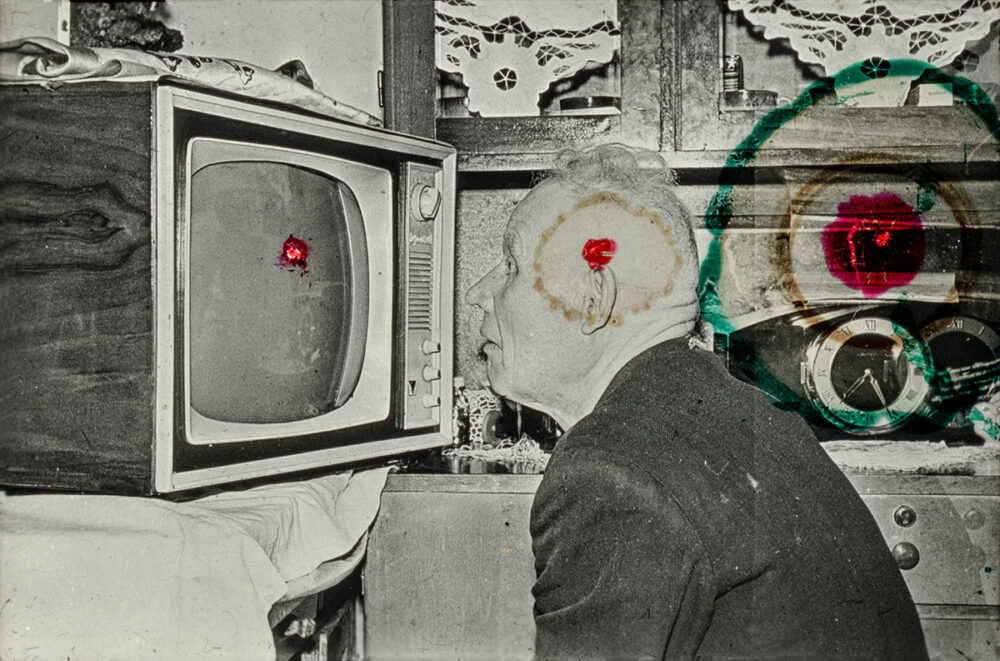
- Evgeniy Pavlov, Total Photography
06.03.2024 – 06.04.2024, Vilnius Photography Gallery
Evgeniy Pavlov is a Ukrainian artist. In 1971, he co-founded the Kharkiv-based photography group Vremia, which played a pivotal role in driving the development of conceptual photography in the Soviet Union. Throughout his creative career, Pavlov experimented with various techniques and photographic styles. This included the use of wide-angle and panoramic lenses, layering, montages, and other manipulations of the photographic image that were popular among Kharkiv photographers.
The exhibition showcases photographs from the Total Photography series, created between 1990 and 1994. In these works, the artist grappled with the limitations of photographic discourse, viewing photography not merely as the result of a mechanical process but as the starting point for an artist’s expression. Pavlov used photographic negatives to construct alternative realities, manipulating them to offer interpretations of reality. This involved covering the material surface of the image with scratches, dust, paint, and emulsion deformations. In doing so, he sought new modes of expression and pushed the boundaries of photography.
LATVIA
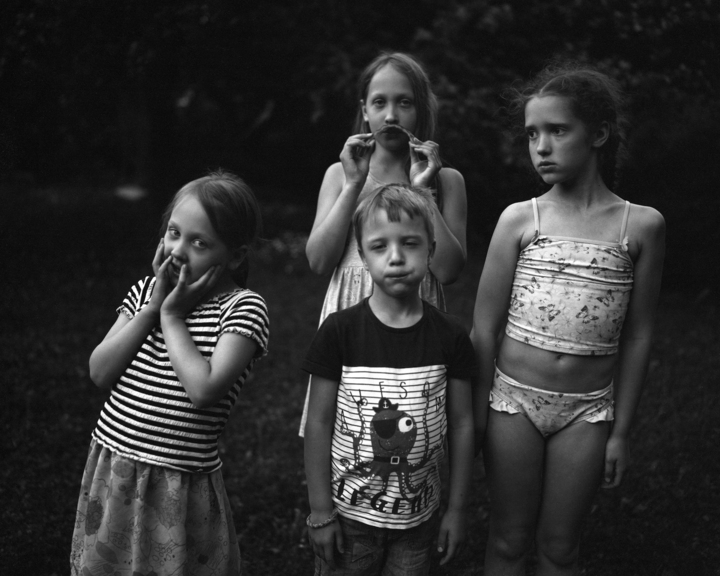
- Rūta Kalmuka, Interconnections
15.03.2024 – 09.05.2024, ISSP Gallery, Riga
Rūta Kalmuka’s large-format black-and-white photographs, taken over more than a decade, portray her family members and her home by the river, searching for connections between nature, people and the events that surround them. “There once stood an apple tree that withered until just a stump remained, yet beside it an elder tree blossoms profusely. Though something has been lost, in its absence something new perpetually blooms. And everything is interconnected,” says the artist.
Portraits of loved ones are interwoven with fragments of nature, in particular the river and its ever-changing essence. In Rūta Kalmuka’s series, the flow of water, its constant circulation and its ability to take and adapt to any form point to a woman’s ability to embody several roles in her lifetime: from daughter to wife, and later to mother, while maintaining her own personal identity. The Interconnections series also reflects on the inevitable connection between a woman and her professional vocation – in this case, photography. The woman’s role in the family must meld with the mother’s creative interests and ambitions, as she appears to merely observe and document the everyday. As a result, a new identity emerges – that of the “mother-artist”, serving as a reminder of the importance of not forgetting, understanding and reclaiming ourselves in the rush and challenges of everyday life.
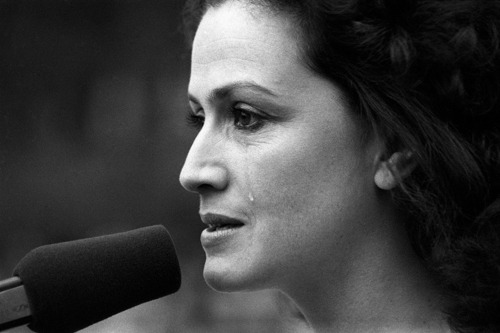
- Uldis Briedis, To be free
13.01.2024 – 30.03.2024, Concert Hall Great Amber, Liepāja
Photographer Uldis Briedis has captured Latvia’s most prominent personalities and significant events, blending both artistic and documentary value in his work. Briedis embarked on his photography career in Liepāja, where he served as a photo correspondent for a district newspaper. He continued his journalistic endeavors for various publications until 2010 and has received several awards for his contributions.
“The portraits of Latvian cultural figures by photographer Uldis Briedis serve as photographic records, capturing the essence, events, and spirit of their era. These portraits possess both documentary and timeless qualities, depicting their subjects’ faces in diverse moments of their lives. This allows viewers to connect with the essence of creativity – an inner freedom that remains in constant connection with its source and truth, despite the constraints of time. Creativity manifests as an inner freedom that cannot be suppressed or concealed, even when it seems only possible within subtextual realms. It represents the freedom to exist and communicate in the universal language of signs, symbols, tonalities, strokes, polypoints, and sound,” writes journalist Una Meistere about Briedis’ work.
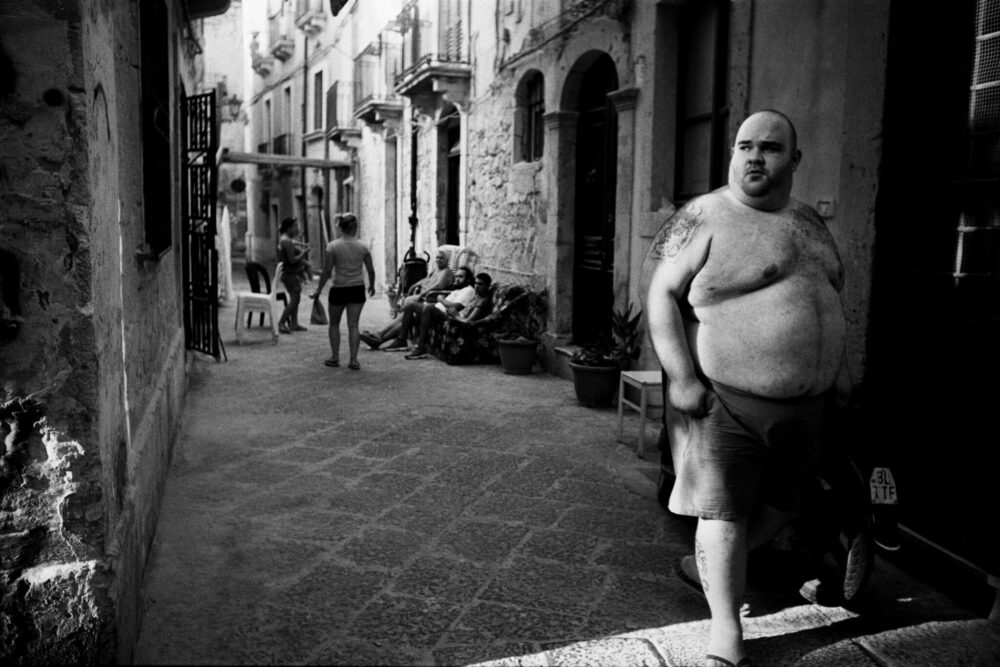
- John Randolph Pepper, Italy, 40 Years: 1970-2010
15.03.2024 – 19.04.2024, Art Academy of Latvia
The exhibition by John Randolph Pepper (1958) invites visitors on a journey through Italy covering the post-World War II period to the most recent past, from 1970 to 2010. The project is an initiative of the Embassy of Italy in Riga.
The story of the photographs in the exhibition begins in 1970, when John’s father gives him his first camera Pentax, and after two years of training with the famous Italian photographer Ugo Mulas (1928-1973), the boy begins his journey in photography. The young photographer takes to the streets and captures everyday Italian life, architecture and landscapes.
John R. Pepper’s photographs are a testament to his deep respect for Italian culture and its values, highlighting human relationships – family, friendship and the joy of living.
